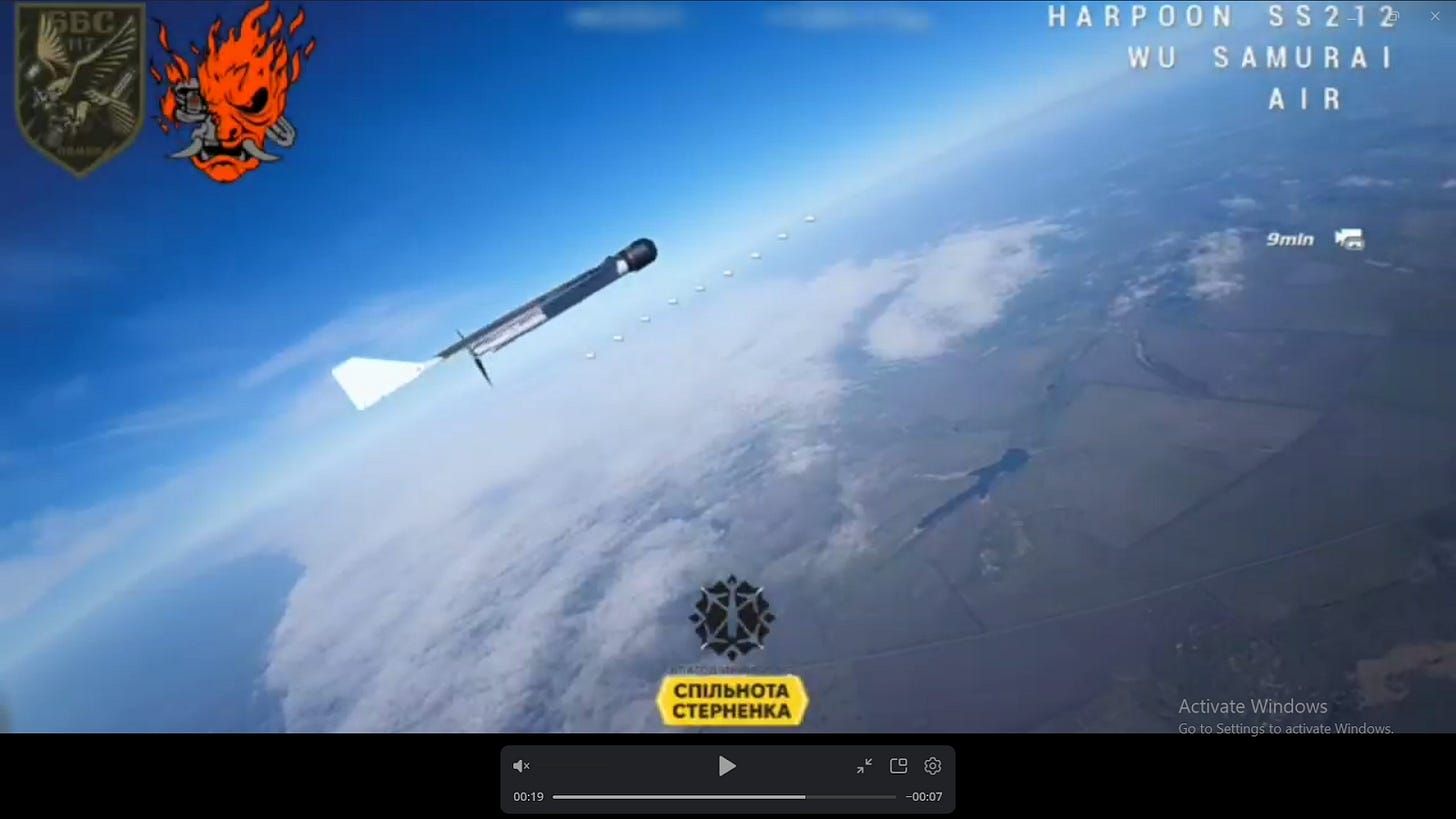Coming to a Military Base Near You: Ukraine’s Drone Attack Changes Everything
by Benjamin Cook
Ukraine’s drone strike against Russian bombers shows why U.S. base security needs a complete overhaul—before it’s too late.
On June 1, Ukraine executed the most significant drone operation of the war to date, destroying or damaging a large portion of Russia’s strategic air assets in one coordinated strike. The drones weren’t hypersonic or AI-driven—they were small, cheap, and made from commercially available parts, piloted by open-source software and deployed from inside Russia using civilian trucking infrastructure.
The operation worked. Russian bombers burned on their own runways, and Moscow's entire theory of strategic depth was upended in a single day.
That success has global implications, and every U.S. base commander should be paying attention.
The doctrine of “attack from within”
Reports suggest that Ukrainian special forces loaded trucks with hidden compartments carrying small FPV-style drones. The vehicles traveled hundreds of miles, and parked near high-value targets—airbases holding long-range bombers and airborne command aircraft. When the signal was given, the drones launched.
Some were likely piloted remotely. Others may have used pre-programmed or semi-autonomous flight paths. Either way, they bypassed traditional perimeter defenses, jammed or not, and reached their targets.
The message was clear: The base perimeter is no longer the front line.
Hate Subscriptions? Me too! You can support me with a one time contribution to my research at Buy Me a Coffee. https://buymeacoffee.com/researchukraine
Base security was not built for this
The U.S. military has made huge investments in counter-drone technology over the last decade, particularly for use overseas. But most CONUS and forward-deployed bases still assume that threats will arrive through the gate. Most base defense is still geared towards active shooters and truck bombs.
To adapt, base commanders and the Pentagon need a fundamental shift in mindset and capability.
First, every installation needs a dedicated drone response team—not a collateral-duty MP with a radio, but a trained, full-time unit prepared to detect, track, and neutralize drones at all hours with various sensor and shooter options.
Second, defenses must be tiered. Radar alone won’t catch drones this small. Nor will RF sniffers, especially when attackers operate autonomously. Bases need overlapping sensors—optical, thermal, auditory, and radar—that work together to build a complete picture of drone threats across all altitudes and approach paths. Beware the defense contractor peddling "solutions" that only use one or two sensors. Everything must be used. Because every sensor can be defeated individually. This is about tiered sensor-shooter integration.
Third, interdiction systems must evolve. Directed energy weapons and RF jamming/spoofing have their place, but commanders also need kinetic options. That might look like a short-range CIWS system firing titanium shot in a controlled saturation pattern or fast-deploying mobile sensor-shooter platforms that can plug gaps and respond to breaches in real time. Your drone response team also needs fast-launch drone interceptors. In Ukraine, drone-on-drone interception has become the norm—some hit-to-kill, most carrying small explosive charges. The U.S. has nothing like this. Anything offered by a prime contractor is too complex, too expensive, or both. But this kind of system—cheap, fast, reproducible—is exactly what’s needed. Not exquisite. Just effective. Attritable drone-on-drone defense is the new baseline.
Civilian infrastructure is now a Vulnerability
The Ukrainian operation didn’t just expose weaknesses in base defense—it also showed how commerce can be weaponized. Civilian trucking routes, mobile networks, and legitimate logistics chains were turned into vectors for strategic attack. It’s not the truck stocking up the Class VI with booze you need to worry about. It’s the semi parked a mile from the base fence line who looks like he’s on his mandatory break or eating lunch.
That changes the rules.
Hate Subscriptions? Me too! You can support me with a one time contribution to my research at Buy Me a Coffee. https://buymeacoffee.com/researchukraine
Bases need new legal tools to act beyond their fences. Think Border Patrol-style jurisdiction for inspecting commercial vehicles near sensitive installations. That means working with lawmakers, not just DoD policy.
The most controversial—but possibly most essential—upgrade may be the ability to kill local mobile networks on command. Drones often rely on LTE or 5G signals for control and coordination. If base command can’t shut that infrastructure down immediately during an incident, they’re already behind. It won’t be easy: it will require relocating or modifying cell towers outside the wire. But the capability must exist. It can prevent adversaries from coordinating attacks and using our own infrastructure to communicate with the UAVs.
The next version won’t be so obvious
The Ukrainian strike is already being studied by China, Iran, the Houthis, transnational crime syndicates, and cartels. It worked because it was audacious, cheap, adaptable, and hard to trace. It will be copied. But the next version won’t be exactly the same.
It may come via fishing boats near Guam, or overland trucks near Ramstein. It may use encrypted RF, Starlink, or no comms at all. It will probably even use U.S.-made components.
And if you’re a base commander still relying on fences, roving guards, and “see something, say something,” you’ve already lost.
Benjamin Cook continues to travel to, often lives in, and works in Ukraine, a connection spanning more than 14 years. He holds an MA in International Security and Conflict Studies from Dublin City University and has consulted with journalists and intelligence professionals on AI in drones, U.S. military technology, and open-source intelligence (OSINT) related to the war in Ukraine. He is co-founder of the nonprofit UAO, working in southern Ukraine. You can find Mr. Cook between Odesa, Ukraine; Charleston, South Carolina; and Tucson, Arizona.
Hate Subscriptions? Me too! You can support me with a one time contribution to my research at Buy Me a Coffee. https://buymeacoffee.com/researchukraine
Mr. Cook’s Substack:









Spot on. We just had an example of an ignorant idiot of a governor in Arizona veto a bill disallowing foreign ownership of land next/near to military bases. The leadership in the US is woefully uncreative and naive. China is actively prosecuting a gray war against the US right NOW and our politicians still act like they're dealing with a commercial competitor and not a malign actor seeking to destroy and supplant us.
The drones used the open-source software. It was Ardupilot.
https://discuss.ardupilot.org/uploads/default/original/3X/d/b/db257a36b201e350fdd0c0adbe765ab54981d072.png
https://discuss.ardupilot.org/t/failsafe-sbus-not-working/65942/8
The developers said many times that it's illegal to use it for military purposes. Both sides have used Ardupilot since at least 2023.